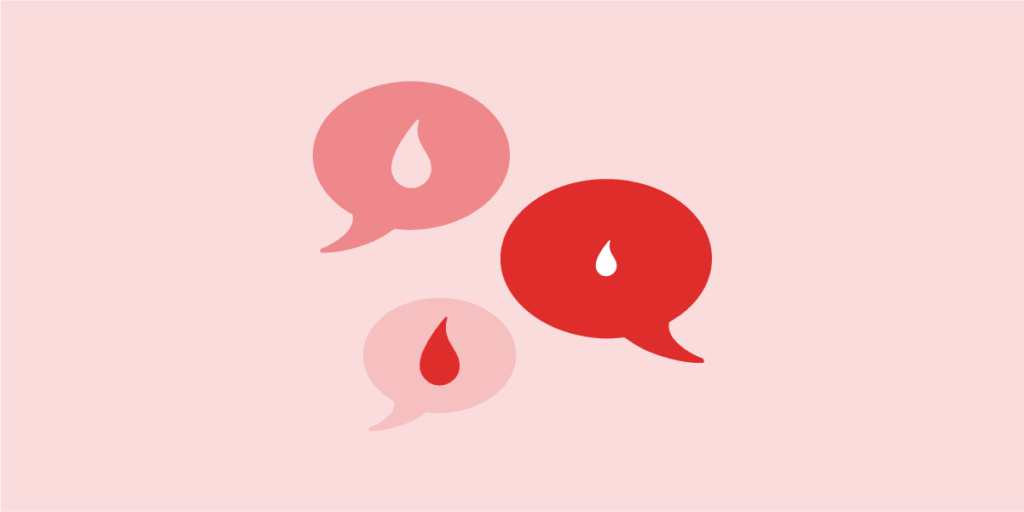Saga of Myth, Mystery and Misunderstanding
Even in the age of artificial intelligence, period myth, mystery, and superstitious beliefs continue to denigrate people. When the world is talking of inhabiting the planet Mars, some still refuse to raise up the idea that menstruators are “impure” because they bleed. Avni Gupta dwells upon the times when the surrounding women suggested tying a black thread around her toe to delay periods, to stay away from religious events or places during the menstrual cycle, and told her that periods are the result of “bad blood” being expelled from her body.
The age-old practice of propagating period myth and taboo is known to have influenced girls in a way that some have lost their lives owing to it. A teacher from the southern part of India scolded a young girl when she stained her uniform with menstrual blood. The event affected the 12-year old immensely, resulting in her committing suicide. Another 12-year old was made to sleep outside her house, in a hut, when she was menstruating. The severe cyclonic storm Gaja, which originated two years ago, in November, uprooted the hut and took the girl’s life.

The Culture of Silence and Superstitions
As a part of silence culture, menstruation remains a taboo in our society. It forms a significant barrier that seizes support for healthy community practices. As menstruation is not openly discussed, a stigma revolves around women’s personal hygiene and discrimination against the gender blooms. Period myth violate one’s right to bodily integrity, health, equality, privacy, and freedom from in-humane treatment. A feeling of shame, embarrassment, and inferiority prevails as a result of the social control of a physiological phenomenon. Girls are known to avoid school, classes, physical activities, and outdoor games ever since menarche.
In India, it is often believed that menstrual blood is dirty and polluting and purifying baths must follow the days a woman bleeds. Broom sticks, footwears, and neem leaves are left besides the menstruating woman, which shall prevent intrusion of evil spirits. Most of the survey studies conducted in India reveal a large group of women claiming a long list of prohibited activities. Holy or sacred places and activities are majorly avoided including entry to kitchen, temple, sleeping on bed, touching a holy book, attending a religious ceremony or wedding. Basil, a holy plant, once touched by a menstruating female dies immediately. Excessive consumption of sweets is believed to cause excess bleeding and sour food items must also be avoided. Other diet-related restrictions imposed include: consumption of curd, milk, jaggery, sugarcane, rice, brinjal, ghee, papaya, pickles, onion, and potatoes.
The Myths and Misbeliefs
Menstruation is a natural physiological process, with numerous myths and misconceptions clinging onto it. These practices vary amongst different cultures and socio-economic groups. The deep-rooted belief prevails in the urban as well as rural areas of India. Potters from Dharavi believe that if a menstruating woman touches clay, the earthenware sculpted from the clay shall break easily.
Girls from lower socio-economic strata of Mumbai claim that their mothers have taught them to wash, dry, and reuse the sanitary napkins. Washing is preferred to avoid bad smell and prevent snakes from consuming the blood-stained pad, which would eventually risk the girl’s fertility and cause a curse. Those residing in urban slums of Delhi believe that menstrual blood is the heat of one’s body – if not released, it forms gas. A man is forbidden to touch his wife when she’s bleeding because if their heat (menstrual blood and semen) mix, it’ll be harmful.
Tribal Gujjar girls are instructed by elders to not brush their teeth, wash and comb their hair, and even take a bath while they are menstruating. Women are even advised to not talk loudly when on their periods. Some even believe that when a snake is present in the vicinity of a woman on her periods, it becomes blind and is unable to escape from that area. Certain tribal women are even forced to live in a cowshed.

What do the Hindu Gods say?
Taboos and myths surrounding periods stand tall as they are embedded deep in our holy literature. Rig Veda states that while on periods, a woman must not apply collyrium to her eyes, oil to her body,and bathe in water. She must not sleep during the day time, not touch fire, make rope, clean her teeth, eat meat, look at celestial bodies, drink out of a large/copper vessel.
According of Hindu mythology, when Lord Indra severed the head of Vishwaroop Acharya, he was cursed with “Brahmahatya dosha”. He got rid of the curse by distributing it amongst land, water, tree, and women. That is how women got “Rajaswala Dosha” (menstruation) and gained the ability to give birth. An Indian author, Devdutt Pattanaik links purity and power to bodily fluids – not spilling semen makes men powerful and pure and inability to hold back period blood makes women weak and impure.

Where does Education Step in?
Girls generally attain menarche at the age of 11-13. However, only less than half of them are aware of the sensitive but crucial topic of menstruation. Surveys reveal that in maximum cases, the mother is the informant, followed by friends, media/internet, sisters, and teachers. Most girls have inadequate knowledge about the origin of menstrual blood. More than 50% are unaware of the source, while many state urethra to be the source. Some even claim that it is a “God’s curse”.
Literacy is one of the most important factors associated with period myth and stigma. CBSE textbook in eighth grade has a chapter titled “Reaching the Age of Adolescence” which explains menstruation in a paragraph of less than 250 words. Topics like personal hygiene, myths, taboos, and pregnancy are covered within 2-3 sentences. Surprisingly, the word “menstruation” has been used less than 10 times throughout the lesson. In tenth grade, the topic is revisited as “How do Organisms Reproduce?”, which explains menstruation physiology in less than 100 words. Moreover, many students claim that teachers often avoid teaching and skip these chapters.
Menstruation Normalization
Because menstruation is not normalized as a topic of conversation, people often giggle or remain silent when discussing it. When young students are not educated with scientific and logical explanations of menarche, they are left puzzled. This results in people being unable to distinguish between period myth and reality. They choose to believe whatever their peers or parents are telling them. Empowering young boys and girls with information about natural phenomena enhances their physical as well mental health.
It was noted that the education level of mothers influenced the knowledge of menstruation that adolescent girls possessed. Education needs to be imparted to all adults, be it men or women, so that they are able to inform their children about the physiology of menstruation and unnecessary misconceptions are avoided.

Light at the End of the Tunnel
The Government of India introduced effective guidelines under Menstrual Hygiene Management (MHM) under the Swachh Bharat Mission. Saathiya Salah, a mobile application, aims to engage a peer mentor to educate youth about changes in their body. Delhi Government aims to include topics like menstruation and puberty in school curriculum. Other initiatives such as Sachi Saheli and Menstrupedia are working to spread awareness through campaigns and workshops.
#HappytoBleed campaign was launched when the chief of Temple Sabarimala made a misogynist statement that if there were security scanners to check if a woman is pure or not, he would think about letting them enter.
P&G India launched a campaign #TouchthePickle with an advertisement aired in 2014. The sanitary napkin brand Whisper realised that a majority of women face restrictions due to period taboos.
The initiative of #Men4Menstruation involves men claiming that menstruation is a man’s responsibility, too. It aims to bust myths associated with menstruation and create awareness amongst the urban and rural masses.
#RedDot campaign set out by Sanfe sparks and normalises conversations about period pain. It intends to generate widespread awareness around the discomfort caused by period pain.
Featured Image Credits: NPR
Author

